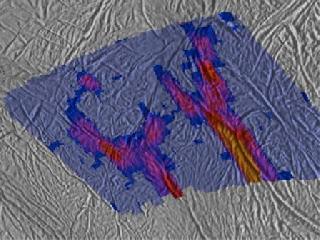
A file photo
PUNE (PTI): A new high explosive is in the making at a DRDO lab here that could replace other standard explosives of the armed forces such as RDX, HMX, FOX-7 and Amorphous Boron.
Scientists at the Pune-based High Energy Materials Research Laboratory (HEMRL) have already synthesised adequate quantity of CL-20, the new explosive, in their laboratory.
"It is the most powerful non-nuclear explosive yet known to man," according to Dr.A K Sikder, HEMRL's Joint Director, who heads the High Energy Materials Division.
The powerful explosive can substantially reduce the weight and size of the warhead while packing much more punch.
In fact, the RDX is not the standard explosive in use with the Indian Armed Forces, but the warheads are mostly packed with HMX, FOX-7 or Amorphous Boron.
The compound, 'Indian CL-20' or 'ICL-20', was indigenously developed in HEMRL using inverse technology.
"The HEMRL has taken India to an elite club of countries with advanced capabilities in the field of Energetic Materials," according to Manish Bhardwaj, a senior Scientist with the DRDO lab.
In fact, CL-20 is such a fascination for the HEMRL that a larger-than-life size model of the compound occupies the pride of place as one enters the portals of the main building of the DRDO's premier lab in Pune.
CL-20, so named after the China Lake facility of the Naval Air Weapons Station in California, US, was first synthesised by Dr Arnold Nielson in 1987.
CL-20 or Octa-Nitro-Cubane is a Nitramine class of explosive 15 times as powerful as HMX, His/Her Majesty Explosive or High Melting Explosive or Octogen, a Defence ministry spokesperson said.
The HMX itself is more than four times as potent as the Research Developed Explosive or Royal Demolition Explosive or Cyclonite or Hexogen, commonly known as RDX.
"CL-20 offers the only option within the next 10-15 years to meet the requirements of the Indian armed forces for futuristic weapons," Sikder said.
"CL-20-based Shaped Charges significantly improve the penetration over armours," he said, adding that it could be used in the bomb for the 120-mm main gun mounted on the MBT Arjun tanks.
"But the costs of mass production of ICL-20 are still prohibitive," he said.
Compared to Rs 750 per kilogram it takes to produce RDX in the factory, the HMX is worth about Rs 6,000 per kg, while a kilogram of CL-20 costs a whopping Rs 70,000 per kg.
"We have a tie up with industry partner for intermediate commercial exploitation of ICL-20," said Dr A Subhananda Rao, Director of HEMRL.
About 100 kg of ICL-20 has been produced by HEMRL in collaboration with the Premier Explosives Limited (PEL).
The CL-20, which looks like limestone or grainy talcum powder, is being manufactured by the PEL factory at Peddakanlukur village in Nalgonda district of Andhra Pradesh.
"The advantage with the CL-20 is its reduced sensitivity," Sikder said, noting that it enabled easy handling and transportation of the lethal weaponry.
The HEMRL is now concentrating on the Reduced Shock Sensitivity (RSS) explosives, such as RSS-RDX, which costs about Rs 1,500 to Rs 2,000 per kg, and RSS-HMX.
"There is a whole array of low sensitivity material or Insensitive Munitions we are working on," said Rao.
"The world around there is a lot of R&D being pumped into what are called the Green Explosives, as also the advanced Insensitive Munitions (IM) and RSS explosives," Sikder said, adding that it reduced the chances of mishap and loss to men, money, materials and machines.
 Previous Article
Previous Article Next Article
Next Article













The Indian Air Force, in its flight trials evaluation report submitted before the Defence Ministry l..
view articleAn insight into the Medium Multi-Role Combat Aircraft competition...
view articleSky enthusiasts can now spot the International Space Station (ISS) commanded by Indian-American astr..
view article